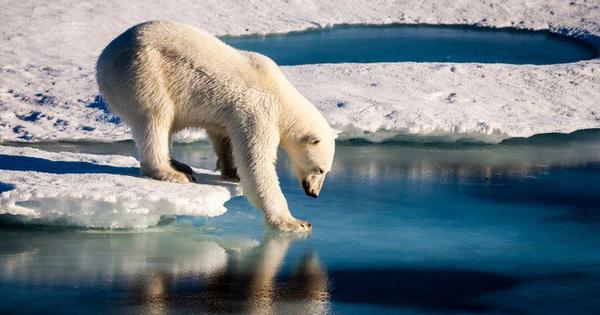Each September, scientists like me look out for the point when the Arctic’s meagre summer fizzles out and sea ice begins to grow once more. This point is known as the annual sea ice minimum extent. It has declined consistently over the past 15 years, and 2019 was the second-lowest after 2012 in 42 years of continuous satellite records. This year’s minimum is imminent, and there is already even less ice coverage than last year.
What is causing this decline in minimum sea ice extent? The short answer is our changing climate. But the more specific answer is that Arctic sea ice is increasingly being thinned not just by warm air from above but by ever-warmer waters from below.

In fact, in a…















